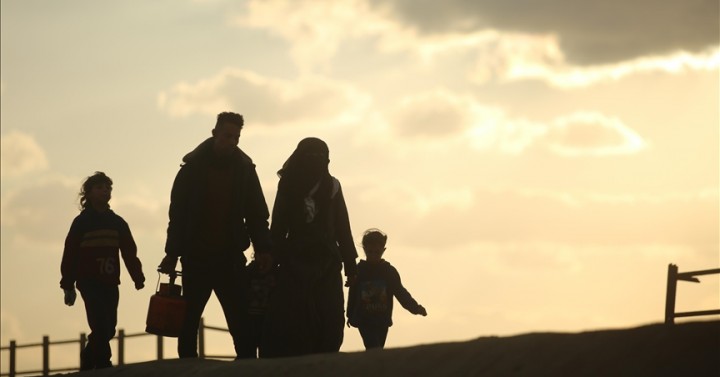Record Levels of Internal Displacement Highlight Urgent Global Crisis

On February 13, 2025, as harsh weather swept through Gaza City, displaced Palestinians found themselves journeying back to their lands in the north from the south, traversing the crowded al-Rashid Street. This poignant scene underscores the broader humanitarian crisis facing millions worldwide, as detailed in the recent Global Report on Internal Displacement 2025, released from Geneva on Tuesday.
The report, compiled by the Norwegian Refugee Council’s Internal Displacement Monitoring Center (IDMC), alarming reveals that a staggering 83.4 million individuals were living in a state of internal displacement at the end of 2024. This figure constitutes the highest number ever recorded, effectively doubling the number of internally displaced persons (IDPs) since 2018. Notably, this total population is now comparable to that of Germany, indicating a profound and growing global crisis.
The report highlights that nearly 90 percent of these displacements—accounting for 73.5 million people—were triggered by conflict and violence. Sudan emerged as a particularly affected region, reporting an unprecedented 11.6 million IDPs, which represents nearly 60 percent of the global total. The situation in Gaza is equally dire, where nearly the entirety of the population remains displaced due to ongoing conflict.
“These latest numbers prove that internal displacement is not just a humanitarian crisis; it’s a clear development and political challenge that requires far more attention than it currently receives,” stated IDMC Director Alexandra Bilak, emphasizing the need for a comprehensive response.
In addition to conflict-driven displacements, the report notes that natural disasters were responsible for 45.8 million internal displacements in 2024, marking the highest number since the IDMC began tracking these statistics in 2008. The United States alone accounted for 11 million disaster-related movements during this period, the largest figure for any country in a single year. An overwhelming 99.5 percent of these displacements were attributed to climate-related events, particularly severe cyclones and devastating floods.
“This year’s figures must act as a wake-up call for global solidarity,” said Jan Egeland, secretary-general of the Norwegian Refugee Council. He described the lack of political will and inadequate funding as a “moral stain on humanity,” underscoring the urgent need for collective action.
The report also warns that overlapping crises are exacerbating vulnerabilities. A significant three-quarters of those displaced by conflict are residing in countries that are highly susceptible to the impacts of climate change. The IDMC noted that the number of nations reporting both conflict and disaster-related displacements has tripled since 2009, signaling an alarming trend. Without swift and decisive action, the report cautions that the costs of inaction will only escalate.
The International Organization for Migration (IOM) echoed these sentiments, labeling the figures as a “clear warning.” IOM representatives stressed that without “bold and coordinated action,” the number of individuals displaced within their own countries is poised to grow rapidly. “The IDMC report is also a call for preventive action, to use data and other tools to anticipate displacement before it happens, and for the humanitarian and development sectors to collaborate with governments to develop longer-term solutions to prevent displacement,” IOM Director General Amy Pope remarked in her statement.



























